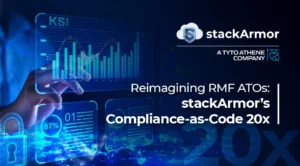
Migrating to a cloud platform is a business necessity mandated by the need to be agile and deliver digital services in a hyper-competitive environment. However, it is critical to ensure that security issues are given due consideration. Gartner estimates that by 2020, 95% of cloud breaches will not be caused by vulnerabilities at the cloud provider but by configuration problems, mismanagement of credentials or insider issues at the enterprise using the cloud. The onus is on YOU to ensure you stay secure in the Cloud.
Have you made the move to the cloud or are you on the verge of doing so? If yes, you are probably asking yourself questions like:
- How to ensure that your data and your application is secure?
- Can you design a full-stack security architecture?
- Would real-life examples of others who have gone this route help you?
- Will a robust Compliance program be difficult to put in place?
Download our free whitepaper that provides a holistic security and compliance framework by clicking at “Cloud Security Best Practices”. We will give you answers to all these questions and also showcase some best practices that can help you “stay secure in the cloud”.
The Whitepaper covers:
Table of Contents
1 Introduction
1.1 Full-stack Cloud Security Architecture and Operations
2 Changing Business and Technology Landscape
2.1 Some real-world examples
3 Security Best Practices
3.1 Environment/Enclave Protection
3.2 Application Protection
3.3 Data Protection
3.4 Operating System and Installed Components
3.5 IaaS Platform Operations
4 Compliance
4.1 Risk Model
4.2 Assessment Approach
4.3 Documents
5 References
6 About stackArmor
7 Appendix A: Common IAM Configuration Alerts and Conditions
Extract from Whitepaper
Changing Business and Technology Landscape
Cybersecurity attacks have increased manifold with nearly daily news about data breaches that are stressing consumer confidence and causing regulators to take notice.
- The Securities and Exchange Commission (SEC) recently fined an Investment Advisor with failing to adoption proper cybersecurity policies and procedures prior to a data breach that comprised PII for 100,000 individuals.
- Similarly, the Federal Trade Commission (FTC) charged a Dental Practice software provider for misleading claims about securing patient data.
Recent court judgments have established the rights of Federal regulatory agencies to “police” cybersecurity practices of firms.
This is causing wide spread changes in the business landscape right from increased scrutiny of security practices as part of the due diligence process, increasing business insurance premiums for online businesses, and Board level interest in a firms’ cybersecurity exposure. Furthermore, as more software is bought “as-a-service” instead of being shrink-wrapped, more businesses must get into the cloud operations business that traditionally do not have cloud and security operations experience. In practice, most SaaS businesses tend to be stronger on the development practices and weaker on operations. Cloud operations requires taking into consideration patching. vulnerability management, boundary protection, enclave hardening, micro-segregation, and continuous monitoring. In order to operate safely, management attention to strong cloud and security operations is critical.
Free Download
Click here to download and read the Free white paper developed by experts in Cloud computing, cybersecurity and compliance.



